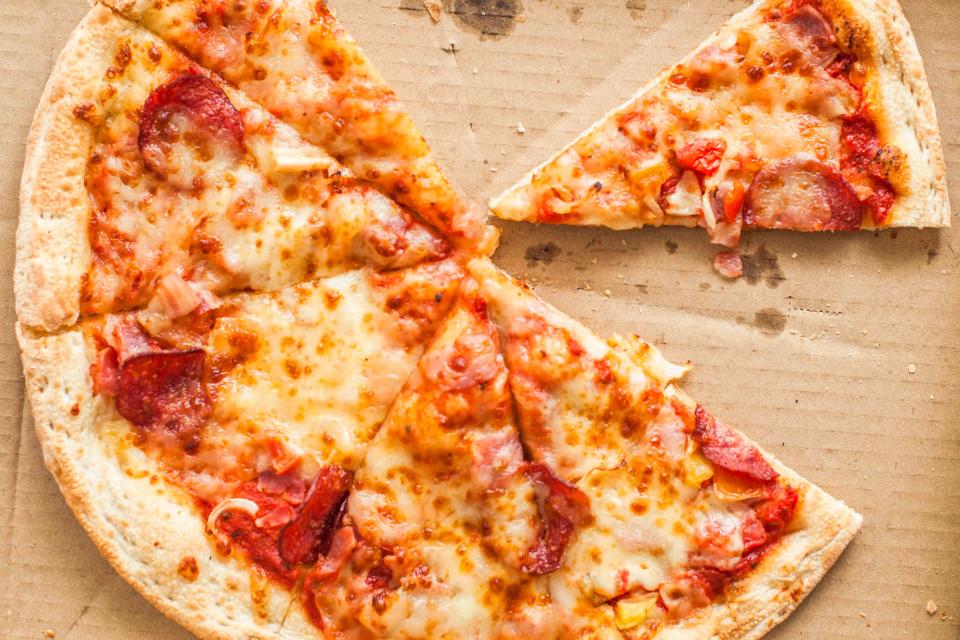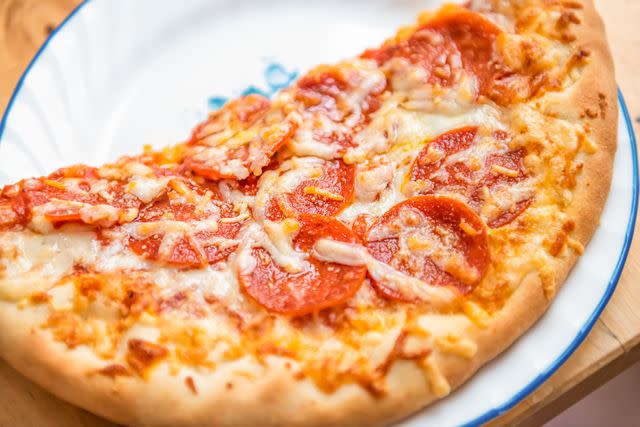The Only Way You Should Reheat Pizza, According to THE Pizza Expert
Anthony Mangieri, a pioneer of Neapolitan-style pizza in the United States and owner of the famed New York pizzeria Una Pizza Napoletana shares his pro tips.

Simply Recipes / Getty Images
Leftover pizza is one of my greatest joys in life. Whenever it’s pizza night, I purposely over-order to ensure enough for snacks and meals over the next day or two.
Everyone in my house has a different method of reheating their slices. My husband turns on the oven, my son loves a chewy microwaved mess of melty cheese. My daughter and I don’t bother with any shenanigans—we like it cold.
But I was curious, what does a pizza expert recommend? I chatted with Anthony Mangieri, a pioneer of Neapolitan-style pizza in the United States, about his reheating preferences. I was especially curious about his take as he is not just the owner of the famed New York pizzeria Una Pizza Napoletana, but is behind Simply Recipes' favorite frozen pizza brand Genio Della Pizza.
Adjust Your Expectations
First and foremost, Mangieri wants you to understand that you’ve already experienced your pizza at its peak. Reheating pizza to recreate the experience you had the day before is, in his opinion, a waste of time. Leftover pizza is a separate joy from the product you’re served at a restaurant. “You're getting two lives out of a pizza, two different experiences,” he explains.
Proper Pizza Storage
The best reheated pizza starts with storage. If you know the pizza is going to get eaten within a few hours, just leave it out at room temperature and eat it as-is. Mangieri enjoys how the crust becomes more bread-like, and the flavors are more intense when they’re not blazing hot from the oven. Reheating pizza that’s just a few hours old actually produces a worse product than eating it at room temperature.
If you need to refrigerate it, take the time to transfer it out of the box. Storing it in the box leaves it too susceptible to wonky moisture levels and refrigerator smells. Instead, wrap it in foil. You’ll preserve the flavors of your pizza and also save yourself a bunch of fridge space.

Simply Recipes / Adobe Stock
Rewarm vs. Reheat
To bring refrigerator cold pizza back to life, heat your oven as high as it will go with the rack positioned in the center. Place your slices on a piece of foil. Bring the foil up and around the slices without fully closing it up. This helps protect the cheese from melting off of the pizza before it’s warmed through.
Halfway through, open up the top of the foil. Bake until it’s just warmed through—you aren’t going for a screaming hot slice.
Mangieri explains that most mozzarella does not respond well to being reheated so thoroughly. It breaks and becomes greasy, lacking the texture and pullback of freshly melted cheese.
If you’re just buying a few slices from a pizza shop, Mangieri recommends asking them not to reheat any slices you’re planning on eating later. That way you avoid reheating it and cooling it unnecessarily and cooking that poor slice three times. Instead, bring extras home at room temperature. Reheat it for the first and only time when you’re ready for it.
The Takeaway
Leftover pizza is a separate experience than fresh pizzeria pizza. For best results, preheat your oven as hot as it will get. Partially wrap refrigerator cold slices in foil. Place in the oven to warm, opening up the foil halfway through. Cook only until the slice is warmed through, not screaming hot.
Read the original article on Simply Recipes.

